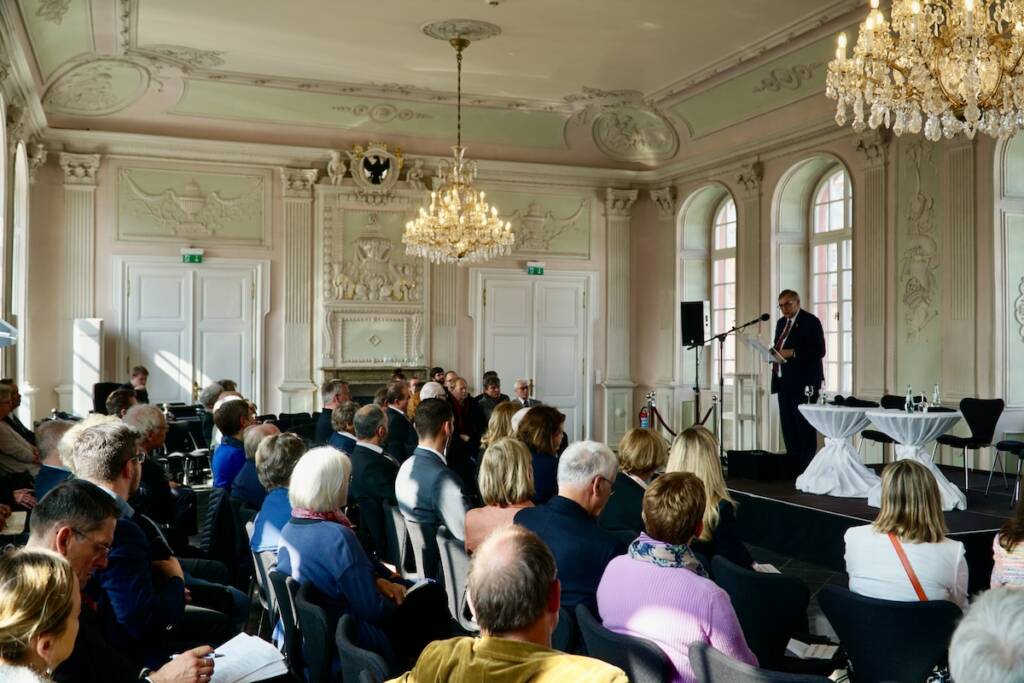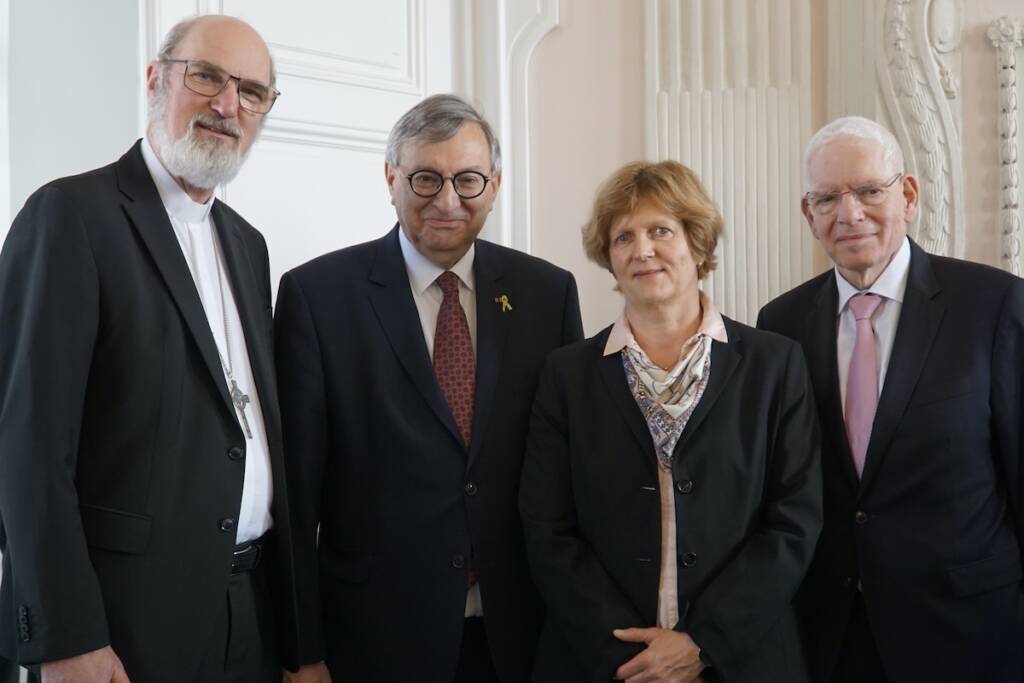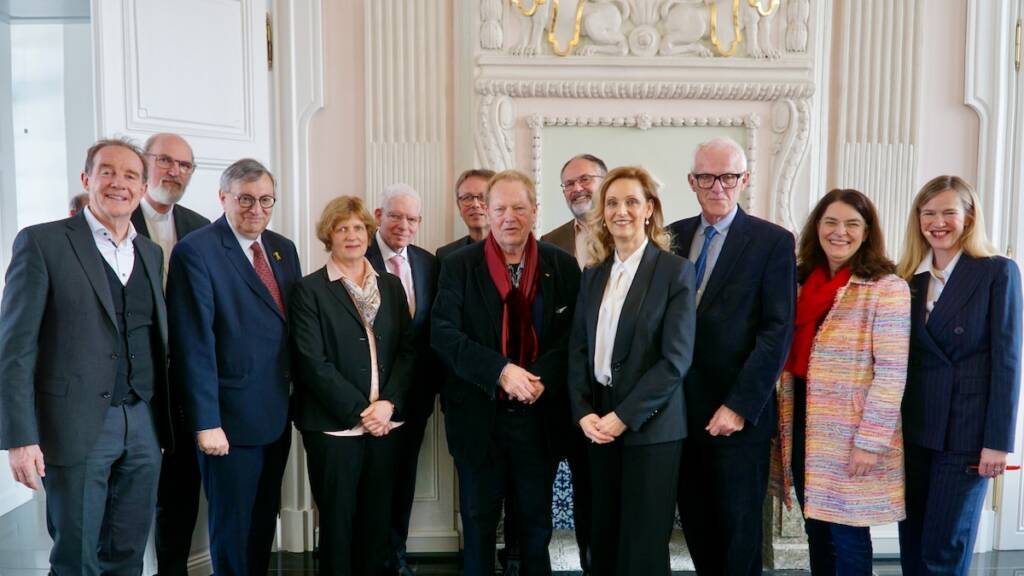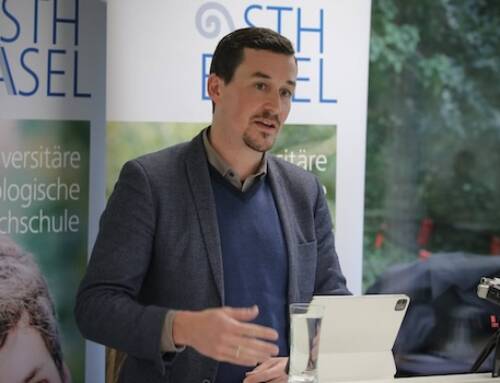
Mortal enmity towards all Jews long before the founding of the state of Israel
Panel discussion in Brauweiler Abbey on anti-Semitism to mark the anniversary of the end of the Second World War on 8 May 1945
As part of a panel discussion at Brauweiler Abbey, Scholar of Islamic Studies Prof. Dr. Christine Schirrmacher spoke about the historical and political causes of the anti-Jewish and anti-Semitic demonstrations in Germany in light of Hamas’ terrorist attack on Jewish civilians in Gaza on 7 October 2023.

(from left to right): The panel Dr. Josef Schuster, Dr. Karl Jüsten, Prof. Dr. Christine Schirrmacher, Susanne Fritz (moderator) © IIRF/Martin Warnecke
The history of the coexistence of Jews and Muslims in the Middle East has been changing, with periods of limited tolerance alternating with pogroms and expulsions of the Jewish minority, especially after the founding of the state of Israel in 1948. The (Egyptian) Muslim Brotherhood was also very active in Palestine after its founding in 1928, carrying out attacks and rejecting the existence of Jews in Palestine. The Gaza Strip was administered by Egypt until 1967. It was not until 1987, after the First Intifada, that Hamas was founded as a branch of the Muslim Brotherhood. The current outbreak of violence against Jewish civilians is therefore not only to be seen as the realisation of the will to destroy Jewish life declared in the Hamas Charter in 1988, but also in line with the goals of the Muslim Brotherhood since 1928, i.e. long before the founding of the state of Israel.
8 May 2024 marked the 79th anniversary of the end of the Second World War in Europe. The remembrance of the end of the war is linked to the question of the development of Jewish life in Germany after 1945. From this perspective, which also takes into account the current rise of anti-Semitism, the Landschaftsverband Rheinland (LVR), the synagogue community of Cologne, the Catholic parish community of Brauweiler-Geyen-Sinthern and the Friends of Brauweiler Abbey association invited the board of the Central Council of Jews in Germany and prominent experts to a panel discussion entitled “Jewish life in Europe after the Holocaust. Looking back and looking ahead”.

The Vice President of the Central Council of Jews, Abraham Lehrer, during his speech © IIRF/Martin Warnecke
The “Kaisersaal” in Brauweiler Monastery had been chosen deliberately, as the new exhibition of the Nazi memorial was due to open there shortly (and has since opened). 300 Jews deported from the former Brauweiler concentration camp can be found in the files of the Dachau concentration camp. The whereabouts of another 300 Jewish prisoners have not been clarified. Brauweiler was both a labour camp and a youth detention centre of the Landschaftsverband Rheinland, a women’s prison and a Gestapo prison, whereby the functions were hardly differentiated in everyday life; the cells and guards were the same for all functions. The period of imprisonment was usually only a few weeks. Only the young prisoners, mostly children of communist parents, spent the entire Nazi era there. The best-known prisoner was Konrad Adenauer, the first German Chancellor (1949–1963), for two months in 1944. His wife Auguste (“Gussi”) died in 1948 from the psychological consequences of a suicide attempt in prison in Brauweiler, at least according to the majority of researchers.

Thomas and Christine Schirrmacher with the President and Vice President of the Central Council of Jews, Dr. Josef Schuster and Abraham Lehrer © IIRF/Martin Warnecke
Ulrike Lubek, Director of the Landschaftsverband Rheinland, welcomed the invited guests, who were heavily protected by the police. This was followed by introductions by Pastor Peter N. Cryan and Prof. Dr. Jürgen Rüttgers, former Minister President of North Rhine-Westphalia and Federal Minister and Chairman of the FAB. Dr. Karl Jüsten (Head of the Commission of the German Bishops – Catholic Office in Berlin), Prof. Dr. Christine Schirrmacher (Institute for Oriental and Asian Studies, University of Bonn) and Dr. Josef Schuster (President of the Central Council of Jews in Germany) took part in the panel discussion. The journalist and author Susanne Fritz moderated the discussion, which not only shed light on the manifestations of anti-Semitism, but also looked at the associated challenges in our democratic society.

Organisers and speaker © IIRF/Martin Warnecke





